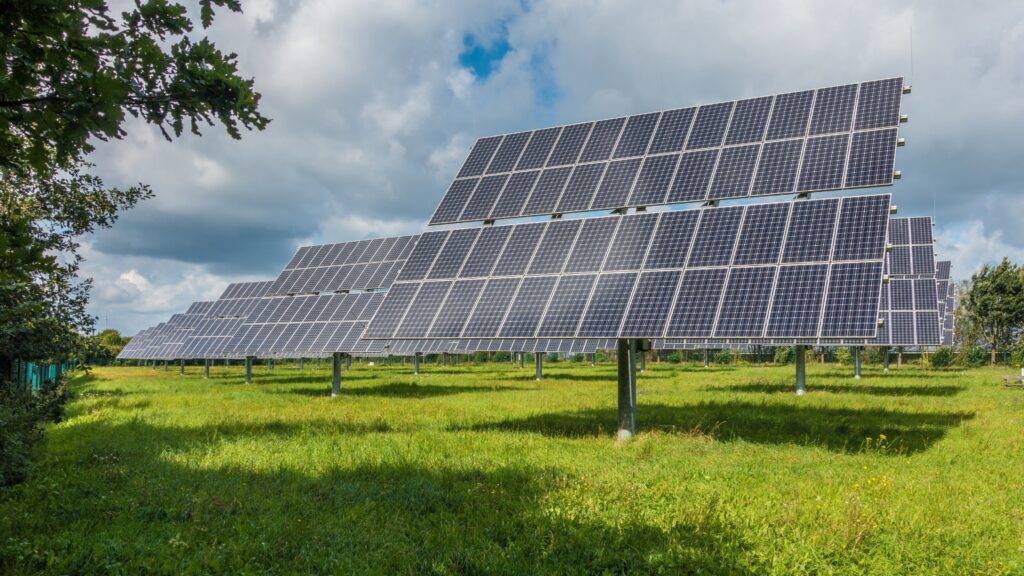
COMPETITIVE EXAM MCQs SERIES of ENVIRONMENTAL SCIENCE for UGC-NET/JRF, SLET, ARS, GATE, and other entrance tests – Energy and Environment – Exploitation of Renewable Energy Resources. Each question has a single correct/most appropriate answer.
Syllabus Outline
- Utilization and harnessing of sustainable energy sources including solar, wind, hydroelectric, biomass, geothermal, and tidal energy.
- Development, deployment, and management of technologies and practices to capture energy from renewable sources such as sunlight, wind, water, biomass, geothermal heat, and ocean tides
- Reduce dependence on finite fossil fuels, mitigate environmental impacts, and promote energy security and sustainability on a global scale.
- Habitat destruction, ecosystem disruption, and biodiversity loss due to large-scale biomass harvesting or extensive hydroelectric dam construction
- Socio-economic consequences such as displacement of communities, loss of traditional livelihoods, and unequal distribution of benefits
- Principles, applications, and integration of renewable energy into existing energy systems, policy frameworks, and market dynamics
*****
- Lithium-ion batteries are a dominant technology for energy storage in applications like electric vehicles and grid-scale storage. What is a major challenge associated with the widespread adoption of lithium-ion batteries?
a) Low energy density
b) Safety concerns
c) Short lifespan
d) Limited availability of lithium resources
2. The integration of renewable energy into existing energy systems involves:
a) Increasing reliance on fossil fuels
b) Changing policy frameworks
c) Modernizing traditional energy systems
d) Utilizing renewable energy exclusively
3. What is a key principle in promoting energy security and sustainability?
a) Increasing reliance on fossil fuels
b) Considering economic consequences
c) Diversifying energy sources
d) Considering policy frameworks
4. Which renewable energy source is least affected by weather variations?
a) Solar energy
b) Wind energy
c) Hydroelectric energy
d) Biomass energy
5. What is the primary purpose of capturing energy from renewable sources?
a) To decrease economic losses
b) To mitigate environmental impacts
c) To promote energy security
d) To prevent habitat destruction
6. Which renewable energy sources are associated with the net metering concept?
a) Solar energy
b) Wind energy
c) Biomass energy
d) Geothermal energy
7. Which renewable energy source has the highest capacity factor?
a) Solar energy
b) Wind energy
c) Biomass energy
d) Geothermal energy
8. What is a major challenge in harnessing solar energy?
a) Dependence on weather conditions
b) High initial installation costs
c) Limited geographic availability
d) Lack of technological advancements
9. The principle of energy security emphasizes:
a) Dependence on finite fossil fuels
b) Equal distribution of benefits
c) Reduction of energy diversity
d) Reliability of energy sources
10. Which renewable energy source has the lowest environmental impact?
a) Wind energy
b) Biomass energy
c) Solar energy
d) Geothermal energy
11. Concentrating photovoltaic (CPV) systems use lenses or mirrors to focus sunlight onto smaller, high-efficiency solar cells. What is the primary advantage of CPV systems compared to traditional flat-plate PV systems?
a) Lower material cost
b) Higher efficiency and power output
c) Simpler installation process
d) Wider range of operational temperatures
12. Which renewable energy source is most suitable for decentralized energy production?
a) Solar energy
b) Wind energy
c) Biomass energy
d) Geothermal energy
13. Which renewable energy source has the highest energy conversion efficiency?
a) Solar energy
b) Wind energy
c) Biomass energy
d) Geothermal energy
14. Which renewable energy source is most suitable for off-grid applications?
a) Solar energy
b) Wind energy
c) Biomass energy
d) Geothermal energy
15. The principle of energy security emphasizes the importance of:
a) Environmental degradation
b) Technological stagnation
c) Socio-economic stability
d) Dependence on finite fossil fuels
16. What is a significant challenge in harnessing biomass energy?
a) Dependence on weather conditions
b) Limited geographic availability
c) High initial installation costs
d) Competition with food production
17. Which renewable energy source has the lowest energy conversion efficiency?
a) Solar energy
b) Wind energy
c) Biomass energy
d) Geothermal energy
18. What is a significant challenge in harnessing geothermal energy?
a) Dependence on weather conditions
b) Limited geographic availability
c) High initial installation costs
d) Technological stagnation
19. The concept of energy democracy is associated with:
a) Socio-economic stability
b) Considering policy frameworks
c) Equal participation in decision-making
d) Decreasing reliance on finite fossil fuels
20. Which renewable energy source has the highest potential for capacity expansion?
a) Solar energy
b) Wind energy
c) Biomass energy
d) Geothermal energy
21. Which point is not considered during the estimation of geothermal resources?
a) Depth, thickness and extent of geothermal aquifer
b) Fossil content of rocks
c) Salinity and geochemistry of fluid present in the aquifer
d) Properties of rock formation
22. Which category does bioenergy fall under?
a) Conventional Energy
b) Unconventional energy
c) Non-renewable energy
d) Renewable energy
23. Assertion (A): Solar and wind energy require larger infrastructure than the power produced.
Reason (R): The energy flux density of solar and wind energy is extremely low.
a) Both A and R are correct and R is the correct explanation of A
b) Both A and R are correct and R is the incorrect explanation of A
c) A is correct but R is incorrect
d) A is incorrect but R is correct
24. A recent study proposes using perovskite solar cells with traditional silicon cells to achieve record-breaking efficiencies. How might this combination address the limitations of each technology?
a) Perovskites can capture a broader range of sunlight, improving overall light absorption.
b) Silicon cells offer superior durability, protecting the more sensitive perovskites.
c) Both technologies require high processing temperatures, making combined production simpler.
d) The combination allows for a reduction in the amount of expensive silicon needed.
25. Which factor is NOT a consideration in reducing dependence on finite fossil fuels?
a) Environmental impacts
b) Technological advancements
c) Socio-economic consequences
d) Energy security
*****
Previous: Environmental Implications of Energy Use
Next: Air Pollution and Control
References
- Boyle, Godfrey (2012) Renewable Energy: Power for a Sustainable Future, Oxford University Press, 3rd edition.
- Sukhatme, S. P., and Nayak, J. K. (2017) Solar Energy: Principles of Thermal Collection and Storage, Tata McGraw-Hill Education, 2nd edition.
- Tiwari, G. N., and Mishra, R. K. (2015) Renewable Energy Resources: Basic Principles and Applications, CRC Press, 2nd edition.

